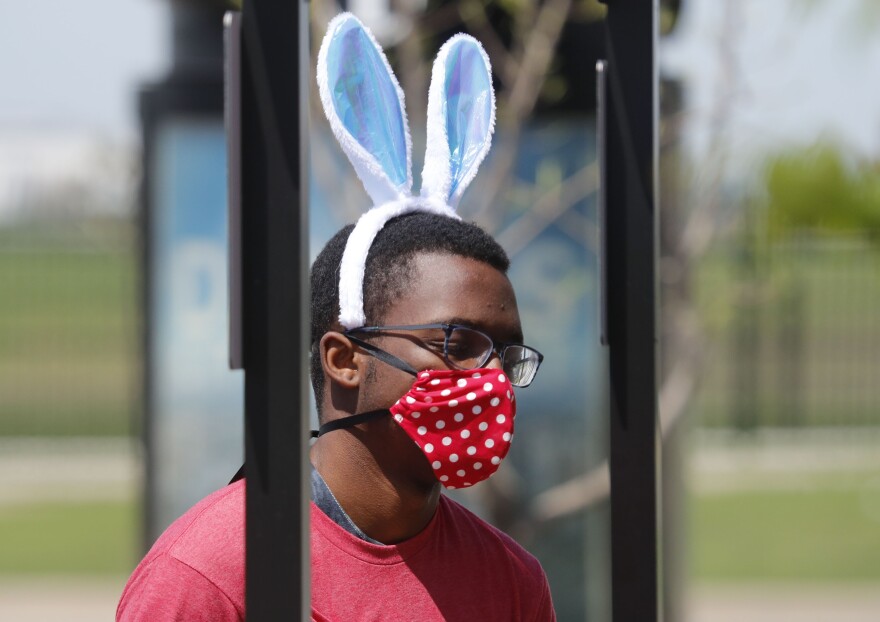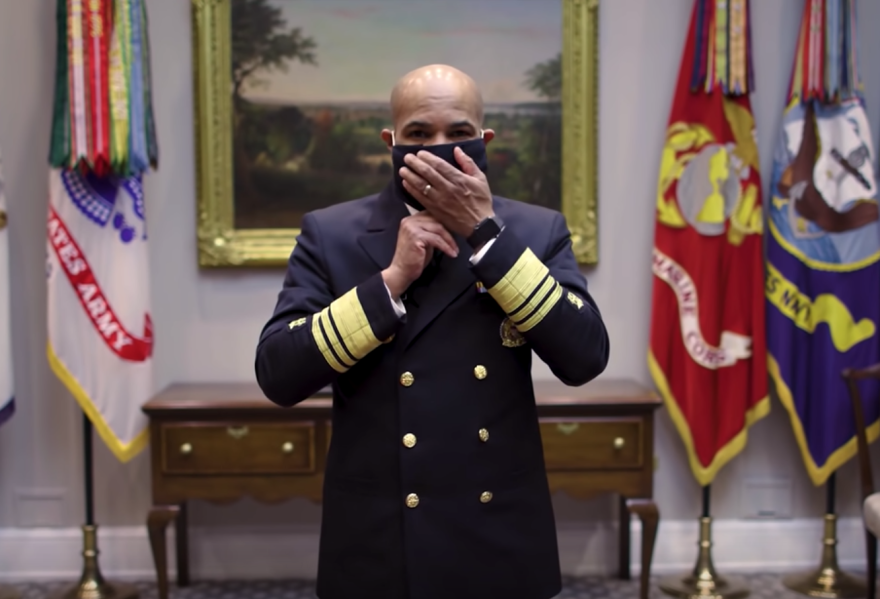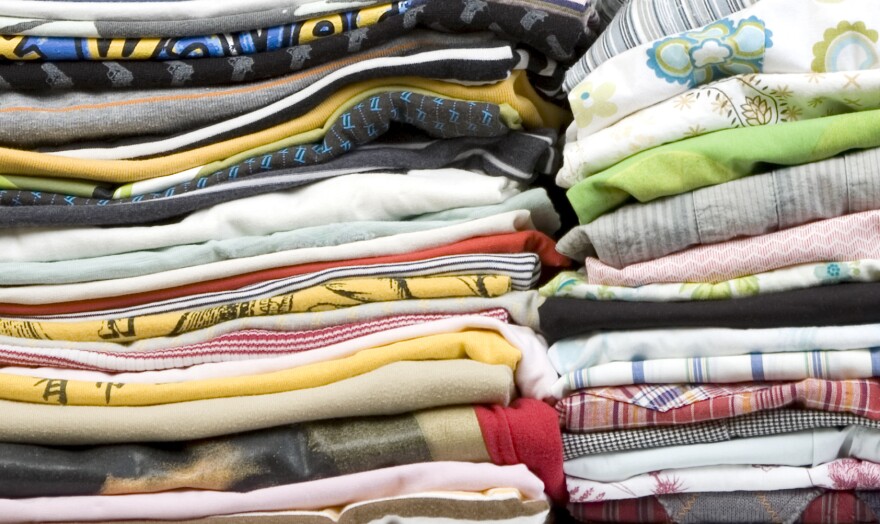CDC guidance recommends we wear face coverings when out in public, but medical masks are in short supply. Here's how to make your own — and use it effectively.
First things first: You need the right material. Cotton works best, so you can use an old T-shirt or even a bandana.
If you're handy with a sewing machine, you can get creative with your cotton fabric and two rubber bands. If not, just tie the bandana or scrap of cloth around your face.
The important thing is to make sure your mouth and nose are completely covered.
» INSTRUCTIONS: Make your own mask with a bandana, T-shirt or other cloth, with or without sewing materials, with this CDC how-to guide
U.S. Surgeon General Dr. Jerome Adams recently made a video showing how to cobble together a homemade mask out of folded cloth and two rubber bands, no sewing required:
#DYK? CDC’s recommendation on wearing a cloth face covering may help protect the most vulnerable from #COVID19. Watch @Surgeon_General Jerome Adams make a face covering in a few easy steps. https://t.co/bihJ3xEM15 pic.twitter.com/mE7Tf6y3MK— CDC (@CDCgov) April 4, 2020
Tarrant County Public Health Director Vinny Taneja says covering your mouth and nose in public has multiple benefits.
"It prevents you from touching your mouth or your nose, that way you're not transmitting the virus to yourself," he says. "And if you happen to be the unlucky one that has mild symptoms or asymptomatically shedding early, then you're preventing that from going to others as well."
Taneja says North Texans should wear a face covering anytime they go anywhere social distancing isn't possible.
But wearing a mask is not a reason to disobey shelter-in-place orders and people should still only venture out for necessary trips, he says.
"All of those things combined, if everybody does it, we have a very good shot at cutting down the transmission in our community and keeping the transmission low and slow, which is what we want," he says.
» RELATED: Is A Homemade Mask Effective? And What's The Best Way To Wear One?
The CDC says cloth face coverings should:
• Fit snugly but comfortably against the side of the face
• Be secured with ties or ear loops
• Include multiple layers of fabric (your cloth being folded into multiple layers, for instance)
• Allow for breathing without restriction
• Be able to be laundered and machine-dried without damage or change to shape
Copyright 2020 KERA. To see more, visit KERA. 9(MDAwMTM1NDgzMDEyMzg2MDcwMzJjODJiYQ004))




